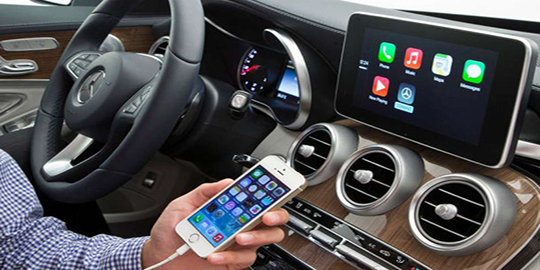
Technological observatory February 16-22
Another week, the Technology Observatory brings you the week's hottest happenings. Let's get to it:
● LG Watch Urbane, LG's new classic Android Wear with a metallic finish
● Samsung will downsize to 14nm with a new Exynos 7
● Car Wi-Fi 4G, the idea by Orange and Huawei for having Internet in the vehicle
● Meizu's mysterious advertisement hints that it's taking its Ubuntu phone to the MWC
● The NSA also gets into hard drives thanks to the mysterious hacker group Equation Group
● The LG G4 will be here in April, don't expect to see it at the MWC 2015
● Confirmed: next March 1st we'll discover the new HTC One
● Samsung acquires LoopPay, a payment system that intends to compete against Apple Pay
● Goodbye Xperia? Sony admits that it's willing to let go of its smartphones
● Manufacturing of the Apple car will start in 2020
● Google launches its YouTube for children exclusively for Android next February 23rd
● It was beautiful while it lasted. WhatsApp stops sending invites to its call service
● Motorola has a "thrilling announcement" prepared for February 25th
If you're one of those who think that smartwatches still overuse uninteresting plastic finishes, get ready to rejoice because LG has just announced that its new LG Watch Urbane, a luxury smartwatch has a metallic finish that gives it a much more formal appearance, similar to classic metal watches. Though the design has little to do with the G Watch R, and, in fact, the device has dropped this last name, Watch Urbane specifications are slightly familiar, equipped with a Qualcomm Snapdragon 400 processor, 1.3-inch P-Oled screen with a resolution of 320 x 320 and 245 ppp, and a 410 mAh battery. Its internal memory has 4 GB, while the RAM remains at 512 MB. Furthermore, the watch has dust and water resistant IP67 certification, Android Wear operating system and gyroscope, accelerometer, compass, barometer and heart rate sensors. Sized 45.5 x 52.2 x 10.9 mm with excellent gold or silver finishes, the watch kick starts a new development of smartwatches by moving away from the plastic or sporty displays we were used to toward more serious, cosmopolitan designs. LG has not provided information on the price or availability of this new watch, but we're sure that we'll have more details in a couple of weeks, during the Mobile World Congress.
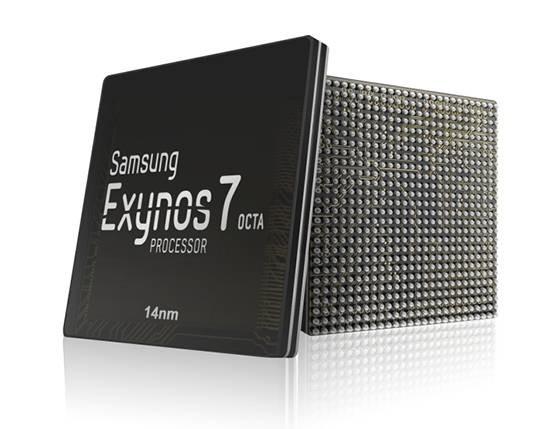
Samsung has confirmed what many had been expecting. The upcoming Exynos 7 chipsets will use 14nm manufacturing technology (3D FinFET), the first of a new generation of more efficient chips, which other companies are going to have a tough time matching. To start, the competitor Taiwan Semiconductor Manufacturing Co (TSMC) is working with 20nm technology. This company manufactures most of the chips for Qualcomm as well as for the newest Apple models. They are not the first; Intel already uses them for the Broadwell family. Downsizing to 14nm entails creating smaller, faster and less hoggish processors, but also implies greater complications for manufacturing and lower production. Its first user will be an 8-core Samsung Exynos 7 with 64-bit architecture. The actual Samsung Exynos 7 are also built using 20nm technology. According to the Koreans, they will gain, in comparison, 20% in speed with 35% less consumption. Will it debut in a Samsung Galaxy S6? This would be somewhat hasty as production will be ready toward the end of the year, but it would be a fist on the table for that independence pursued by Qualcomm that it will possibly occur in a Galaxy Note model (given the dates).
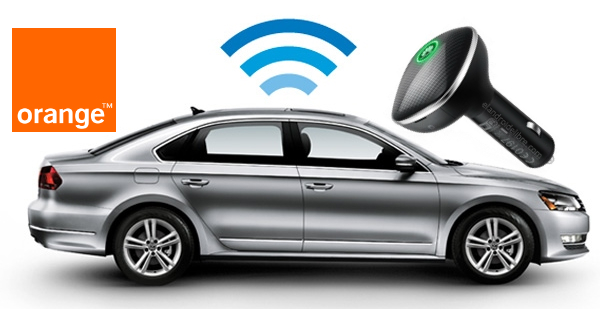
We spend the entire day online, whether at home using WiFi, at work or anywhere else thanks to our smartphone and its data rates, though not having data bonuses isn't too serious of a problem, as we can find wireless networks to connect to in public spaces. People who work “on the move”, rushing from one place to another the whole time, need, no doubt, to share their smartphone's connection, whether in the middle of a park or inside the car. For the latter case, Orange has presented its Car Wi-Fi 4G solution, a device for having a WiFi network inside the car to which almost any device can be connected. This is a 4G device in which we must insert a SIM and it connects directly to the car's cigarette lighter, this simple action is enough to launch the WiFi signal and make the network visible. Up to 10 devices can connect to this network, whether smartphones, tablets, laptops, consoles… Furthermore, the adapter itself has a USB 2.0 port for charging a terminal at the same time. Because it connects to the car, it never requires charging, can be used in any vehicle and is compatible, as its name indicates, with Orange 4G networks as long as there is coverage. It has been designed in collaboration with Huawei and with the HiLink application we can control the WiFi adapter’s data consumption. This Orange Car WiFi 4G accessory can be contracted in several ways through the telecommunications operator. One option is to use it as a second device with a Smart SIM (1€/month), sharing the data of your main line (with a 24-month contract costing €4/month). It can also be contracted with a contract-based Mobile Internet line separately: 1GB for €49 or 3GB for €0 (both options with an 18-month rate permanence), with a no permanence option by one-time payment of €89. Car Wi-Fi can also be purchased permanence-free and without being tied to Orange rates for €99 or prepaid with the Ballena rate. You have all of the information in the Orange website. Car Wi-Fi 4G is another step toward connection everywhere, in this case in vehicles, which may be an interesting option for people who continuously work from their cars or, why not, for professionals of the transport sector who want to offer an extra service during their routes. What do you think?

Given that bq already did its homework when showing the Aquaris E4.5 Ubuntu Edition to the world, now it's Meizu's turn, the other company that last year promised us a smartphone with the Canonical operating system, and what better scenario than the MWC to fulfill it? The Chinese company has uploaded to its official account in Facebook the ad shown above, a very simple image which shows the shadow of 'MWC15' and three spaces: Flyme, YunOS and a blank space (or better said, a question mark). In comments on this staging, the company invites all of its fans to think, leaving an open question in the air as to "what will be next". In case you didn't get it, both Flyme and YunOS are operating systems that Meizu has used in its terminals in the past, clearly enticing us to imagine that at the new edition of the fair in Barcelona it will make an announcement related with a mobile OS. Tying together loose ends, right? If we try to situate it within some more context, what was last known, or better said, rumored, was that Meizu was going to include Ubuntu Touch in its popular MX4, the same way as bq has opted for its already existing Aquaris E4.5 for the mentioned OS. Do you find this combination appealing? Let's see if these suppositions are confirmed in two weeks, almost no time at all...
This time the source was not Edward Snowden of another chapter in this incredible series of initiatives of the NSA for extending its espionage networks and mass tracking of everything and everyone. This time, it has been the security experts of Kaspersky Lab who have revealed a new and worrisome threat to our privacy. This is the spyware that the NSA has managed to install in all types of hard drives by manufacturers like Western Digital, Seagate, Toshiba, Micron and Samsung, and which ultimately would grant complete control over the machine victim of this cyberattack. Researchers at Kaspersky have stated that they have found infected computers in 30 countries, with Iran, Russia, Pakistan, Afghanistan, China, Mali, Syria, Yemen and Algeria as those mainly affected by this type of firmware. According to the report, the targets are military and governmental institutions, telecommunications companies, banks, electricity providers and even Islamic activists. This espionage program apparently has ties with Stuxnet, the computer worm discovered in June 2010 and which was used to attack Iran's installations for enriching uranium. These types of modifications of original firmware have been taking place since 2001. The discovery of this type of program threatens diplomatic relations between the US and many countries, especially with China, which is already drafting new legislation which could, for example, obligate software providers for the banking sector to grant access their code for governmental inspections. Costin Raiu, one of the persons responsible for the report, explains that merely the access to proprietary software of these hard drive manufacturers would make it possible to "inject" the spyware code. Western Digital, Seagate and Micron have specified that they have no proof of these types of espionage programs, while Toshiba and Samsung refrained from making comments. According to Kaspersky, a group of hackers known as the Equation Group is behind this cyberattack. Its techniques, described in greater detail in ArsTechnica, according to these security experts, make this hacker group the most sophisticated cyber attackers in the world. This type of spyware is particularly dangerous given that, as Raiu commented, "once the hard drive is infected by this malicious code it is impossible for anyone, not even for antivirus developers, to scan the hard drive's firmware. It is simply impossible to do so. Though Kaspersky does not directly associate the NSA with the acts of these hackers, everything seems to indicate that the magnitude and resources with which they counted could only be possible thanks to the intervention and support of an agency like the NSA. Two government ex-employees, claims Reuters, have confirmed the existence of this modified firmware in the hard drives of several manufacturers, further strengthening the theory that the NSA is behind its efforts.
The Mobile World Congress 2015 - the mobility fair to be held in Barcelona in just two weeks - will be the place at which several manufacturers, like HTC or Samsung, will present their new, high-end terminals, but in other cases, we'll have to wait some more for these innovations. LG won't present its high-end terminal until April. This is what the Korea Times says, specifying that the LG G4 will take longer to debut onstage. In reality, everything pointed to this, given that LG has never used the MWC for making major announcements about franchise terminals. Together with the fact that the LG G3 has not even celebrated its first birthday yet: it was announced at the end of May 2014 at events to which we had the opportunity to assist in London and New York, and the one-year renewal cycle seems to continue, aligned more or less with this theoretical presentation in April. Sources close to the company claim that the MWC 2015 would not be the best moment for presenting the G4 as it is likely that from the marketing perspective the Samsung Galaxy S6 will be the focus of most of the spotlight. We'll see if this margin of two months will convert the LG G4 into the protagonist of a segment in which it is increasingly complicated to stand out.
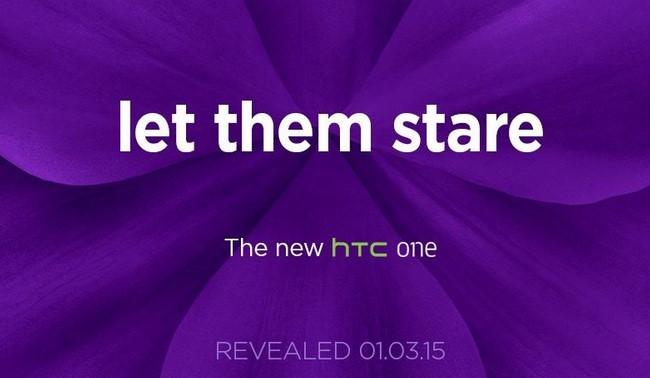
We knew that next March 1st HTC would take the opportunity to organize its main event just before the start of the Mobile World Congress, and though this seemed to clearly be the showplace of the new HTC One, until now no official information had been given. However, the HTC Twitter account in Ireland has wanted to confirm the launch with the message "Let them stare" followed by an unequivocal reference to that presentation: "The new HTC One, revealed on March 1, 2015". There are many expectations for a device that finally might delete the Ultrapixel technology from its rear that did not enable it to compete with an area as important as mobile photography. To this, we must include other already filtered specifications, like its 5-inch screen and 1080p resolution -increasingly confirmed- or its Qualcomm Snapdragon 810 processor. Furthermore, its 3 GB of RAM and 32 or 64 GB of capacity, but above all, its 20.7 megapixel rear camera which could finally position the HTC One M9 amongst the leading high-end referents, not only for its design or features overall, but for a camera that performs at the same level as its competitors.
As regards mobile-based payment systems, no doubt that Apple Pay is finally proving that it can pull it off and that the NFC could be useful. This is why in recent months we've been hearing rumors that the LoopPay payment system would come included in Samsung terminals, something that has apparently been confirmed over the last few weeks with the imminent arrival of the South Korean company's new flagship, the Galaxy S6. However, Samsung has preferred to take even more seriously this issue of mobile payments by directly purchasing the company LoopPay, as shown in the portal The Next Web. This acquisition, the amount of which is yet unknown, could be of major importance for improving the Samsung ecosystem, which had already taken its initial steps by contributing integration with PayPal for its digital fingerprint scanner, but which had fallen much further behind, compared with its counterpart Apple. Now we could think that this acquisition perhaps is not in time for the Galaxy S6, to be presented in just over one week at the MWC 2015 in Barcelona, but as we have already mentioned, this maneuver is perhaps merely so that Samsung could gain full control over the company whose system will be built into its smartphones. Furthermore, though Samsung has lost some ground lately in terms of market share, the truth is that this purchase could probably be particularly positive for LoopPay itself, having its system directly integrated in smartphones that could be sold in millions.
It is not the first time we hear rumors about the possibility of Sony saying goodbye to its smartphones but, to date, these were merely suppositions. This time, to the contrary, the information comes from an overly reliable source to ignore, and it has been the CEO of Sony itself, Kazuo Hirai, who has admitted in his latest statements that Sony has no problem with letting go of those areas that fail to generate profits and which entail greater risk, for example, the mobile telephone segment. The company's idea is to not waste time searching for increased sales in sectors like the smartphone, where it faces major competition of Asian rivals with low-cost equipment, as well as of Apple and Samsung. As already mentioned, this does not come as a surprise. The overheard rumors during previous weeks were fueled by major cutbacks in jobs within this sector, a slower cycle for deploying new terminals (it is said that the Xperia Z4 might not appear at the MWC 2015) and a considerable decrease in revenues of the Xperia range, as indicated by Forbes. Given this scenario and the statements made by Hirai, everything seems to indicate that Sony might forget about its smartphones this year, withdrawing in time to prevent greater negative impact. The company might also follow this strategy with regards to the TV segment, a sector that is equally volatile and has great competitors, so it might abandon it as well if it continues to represent high costs with insufficient profit. On another hand, the video and audio businesses have begun to undergo changes and, for now, the company has confirmed that these will become separate subsidiaries, generating their own profit. This situation leave this brand with a quite peculiar panorama. As pointed out by The Verge, in the case that Sony ends up abandoning its telephone and TV areas, the Japanese brand will shift its focus to three areas: films with Sony Pictures Entertainment, videogames with PlayStation and image sensors (which it sells sufficiently well to Apple for installation in the iPhone). This article, furthermore, shows a graph the clearly depicts the losses represented by smartphones ($1.578 million) compared with the rest of the areas (all generating profit) during 'Q2 2014', a horrible period between July and September last year. The numbers are clear and unfortunately... they don't lie. What failed in Sony smartphones?
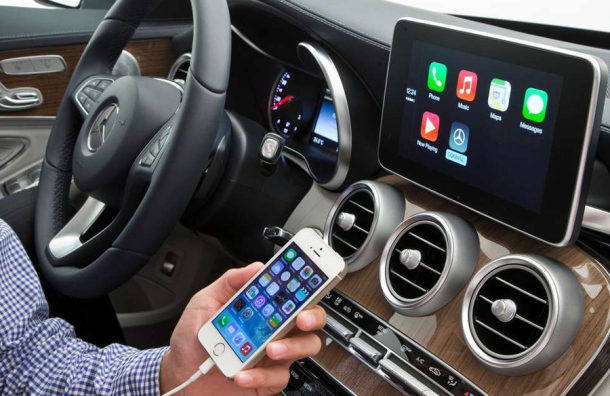
As revealed in Bloomberg, the Apple car, on which the company has supposedly been working, will see the light in 2020. Per rumors, Apple has tried to recruit Tesla Motors employees to help design the vehicle of the future, currently under development and nicknamed Project Titan. Over a year ago some conversations were held between both companies, but it seems that now is when the company from Cupertino is interested in requesting the services of professionals from the automotive sector. In fact, Apple recently hired engineers to optimize battery use, something that may also be directly related with the future car. Recall that the current Chairman & CEO of Apple, Tim Cook, approved a year ago the start of the development of a project of these characteristics, something that serves as a precedent to give more credibility to the rumors of the supposed Apple car. According to how the industry works, 2020 is a very ambitious date, bearing in mind that not only is Apple completely unexperienced in automobile production, but also that the electric car market is still in a very early phase. In the case of the iPad, for example, Apple started experimenting with prototypes in 2002 and did not launch the tablet until 2010, when the technology was mature enough to be guaranteed to reach the market. During this entire process, there was enough time even to shift direction to focus on the iPhone, returning to the iPad 3 years later. Given that the CEO of Tesla, Elon Musk, confirmed that meetings had been held with Apple, we may consider that there are enough reasons to start granting the increasingly weighty rumor credibility. Likewise, Bloomberg also points out the fact that Tesla has considered announcing in 2017 a car that, for under $40,000, will have an autonomy of about 200 miles. Therefore, Apple would arrive about 3 years later to a sector in which it will be a newcomer, but these Cupertino guys weren't the first to launch a smartphone or a tablet either, and this was never a factor that kept them away from success.
During times in which children access new technologies at younger ages, it was a logical step for Google to adapt YouTube, one of its star services, for problem-free use by the youngest crowd, while parents control the contents they may access. This is why Google will launch YouTube Kids next February 23rd, an application exclusively for Android and specially designed for kids under 10, the main characteristic of which is a simpler interface with larger images and icons so that children may press them without difficulty. As it is highly probable that many of its potential users do not yet know how to write, YouTube Kids will include a voice recognition search system so that children may easily find all of the contents they want. In addition, it will offer a complete parental control system so that parents may decide which content their children may access, limit the time spent watching it, and prevent certain kinds of searches by deleting keywords that may inevitably display inadequate content.
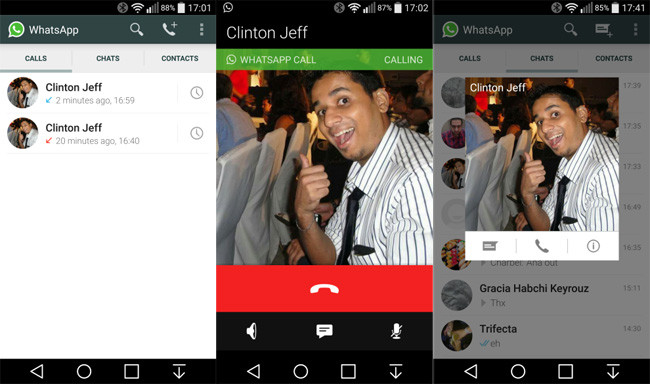
If last Friday we saw what WhatsApp had finally launched, the long-awaited call function for the application that began to expand as users received invitations, one day later the messaging application decided to freeze the growth of its new service and has closed its peculiar invitation service. Until now, it was enough for someone with calls activated to phone you to automatically activate your calls. Per reports by Android Police, those who have the WhatsApp call service activated will continue to be able to use it, but the service will not be activated for those receiving the calls. The invitations worked properly almost all of Friday afternoon. Therefore, this pause is probably intentional by WhatsApp to control service implementation, and perhaps the invitation system will be operational again in the next hours or days. So, we'll have to pay attention and have well-located those persons who already have calls enabled to alert them right away to phone us when the invitations are activated again. In any case, it's good news that after a full year of rumors about WhatsApp calls these are finally becoming a reality.
Motorola, the company that is already part of Lenovo, has prepared a surprise for us. This can be confirmed by the invitation it has sent out to technology media which reads that next February 25th it will offer "a thrilling announcement". The media invite is more original than usual, and no event per se will be held. The selected journalists to know the news first-hand will receive a box. "You choose where and when to experiment [that announcement]. Everything you need fits inside a box that we will deliver to your door next Wednesday". Bets are rolling and some media hint that this may be the new model of the Moto 360 smartwatch. With the Mobile World Congress just a week away, it would be strange to dedicate that announcement to the new versions of the Moto X or Moto G, for example. Another possibility could be that we discover the new Moto E. Some even suggest that Motorola will use this announcement to enter the world of virtual reality and that it could market a proposal similar to the Samsung VR, but right now all is unknown. We are very attentive to what will be unveiled next Wednesday.
